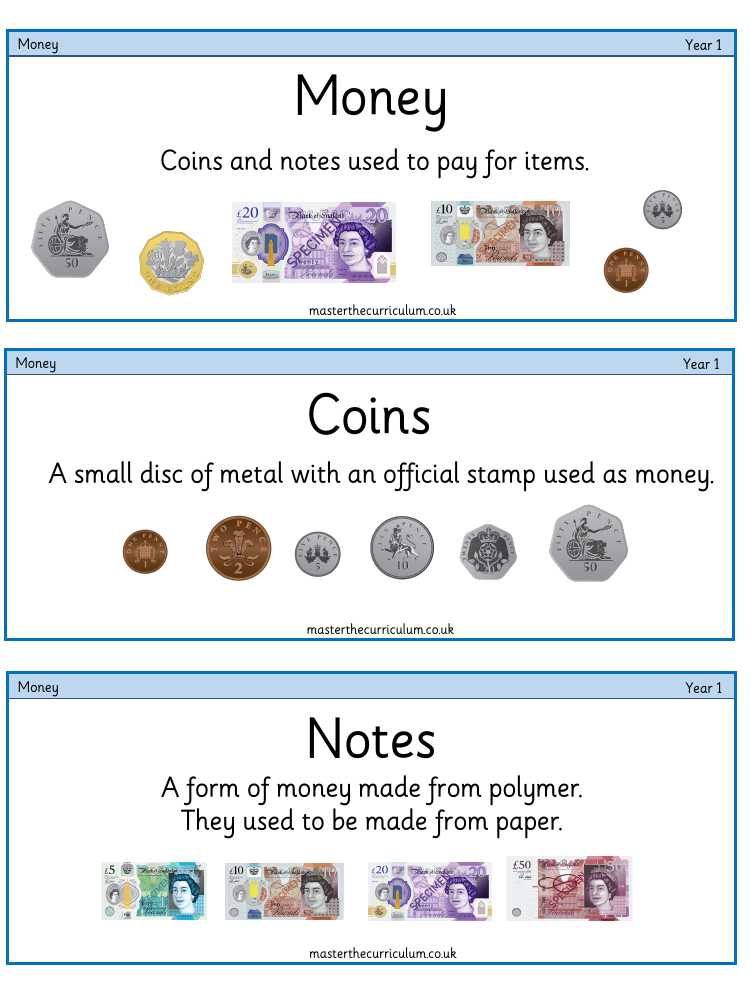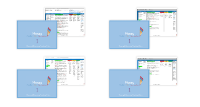Money - Vocabulary

Maths Resource Description
In the context of Year 1 education in the U.K., students are introduced to the basic concepts and vocabulary related to money. Money is the medium of exchange, typically in the form of coins and notes, that is used to pay for items. Coins are small, round pieces of metal with an official stamp, and notes are made from polymer, although they were previously made from paper. In the U.K., the currency used is pounds, symbolised by £, with 100 pence making up one pound. The term 'pence' refers to the plural of penny, and the letter 'p' is commonly used to represent pence.
The coins come in different denominations and materials. Silver coins include the 5p, 10p, 20p, and 50p coins, while copper coins consist of the smaller valued 1p and 2p coins. The concept of value is central to understanding money, as each coin and note has a different worth. For example, a necklace might be worth £10. The total amount or value of something is referred to as its 'total'. Students also learn to compare different amounts or values to determine which is more or less. The term 'equal to' is used when two values are the same, such as 100 pence being equal to one pound. 'Most' and 'least' are terms used to describe the greatest and smallest quantities or amounts, respectively, within a given context.


